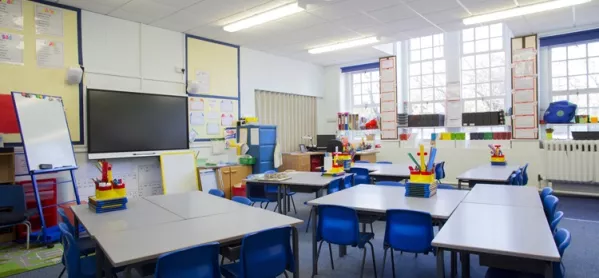A lot has been written and debated about the best ways to support students with learning difficulties - so much so that it can be hard to sift through all the information that is out there.
I think we need to go back to the basics and remind ourselves of just what an inclusive classroom looks like in practice. So, here’s a reminder of some adjustments we can all make.
Think about how you present material
It’s a myth that teachers need to produce a thousand different worksheets in order to meet the needs of individuals. It’s not practical and it’s not essential. But little adjustments can make all the difference.
Dyslexia-friendly fonts have recently been debunked, but it’s still important to consider the spaces between lines and individual words - and to make sure that the text isn’t too crowded on the page or screen. The contrast between black text and a white background can also disadvantage some learners, so consider using an off-white background, and/or coloured text.
When students are working on tasks, it is also useful to have instructions presented on the board as a prompt - and try to include as many visual supports as possible. This can easily be discounted, particularly at secondary school, but it can support a range of learners with additional needs to understand more complex and abstract ideas.
Consider environmental factors
While it is important to have engaging visual supports around the classroom, there is a fine line between supportive and distracting, particularly for students with ADHD or autism. Ask yourself: is there too much clutter? Are there lots of clashing colours?
Also consider where your students are positioned in the room. Most learners with a diagnosis of dyslexia and/or visual stress benefit from sitting closer to the board, while you will need to consider where you are standing to support young people with visual or hearing impairments.
Students with wheelchairs or walking frames should be able to easily get in and out of your room, so they are best positioned near to the door.
Some students with high levels of anxiety prefer to sit at the back of the room or close to the wall, so it would be worth talking to these young people ahead of designing a seating plan. Likewise, consider those students who experience sensory overload. Is your classroom too hot or too cold? Is there a noisy clock ticking or is the buzz of the speakers causing the stress levels of some young people to rise?
Take care in how you communicate
The tone, pace and volume of your voice can all affect how well young people with additional needs follow what you are saying, but it may not always be obvious that an individual has not understood.
Some students are very literal and don’t always grasp the subtle nuances of language, so make what you want to say is explicit. Avoid using too many metaphors.
Be prepared to use a student’s name first to ensure that they are listening - and be prepared to rephrase and repeat some of what you say. Understand that some young people find making eye contact and tracking the teacher when they are speaking uncomfortable, so do not make this an expectation.
Have the right equipment
Some young people may need specialist equipment such as a particular type of seat, pen or writing slope. Make sure these are available to them. For example, if you know you will be doing some extended writing, have a laptop available for a student who struggles to write at length.
Build confidence gradually
We are there to teach our students, not to be their chums, but there is a thin line between exerting a healthy amount of pressure in order to get our students to excel - and pushing them too far.
Some young people may have a fear of reading aloud or presenting to large groups. We have a responsibility to encourage them, but not to force them into something unwillingly.
Instead, try to build confidence up gradually. For example, a child who is fearful of presenting in front of the class could present to a teaching assistant and perhaps one friend, then build up over time. It is worth remembering that no young person will learn if they do not feel safe in their environment, however carefully you consider any other element of the inclusive classroom. That’s the bottom line.
Gemma Corby is Sendco at Hobart High School, Norfolk. Her Sendco column for Tes runs every second Tuesday during term time




